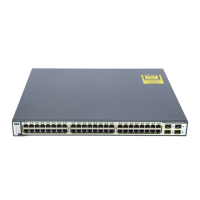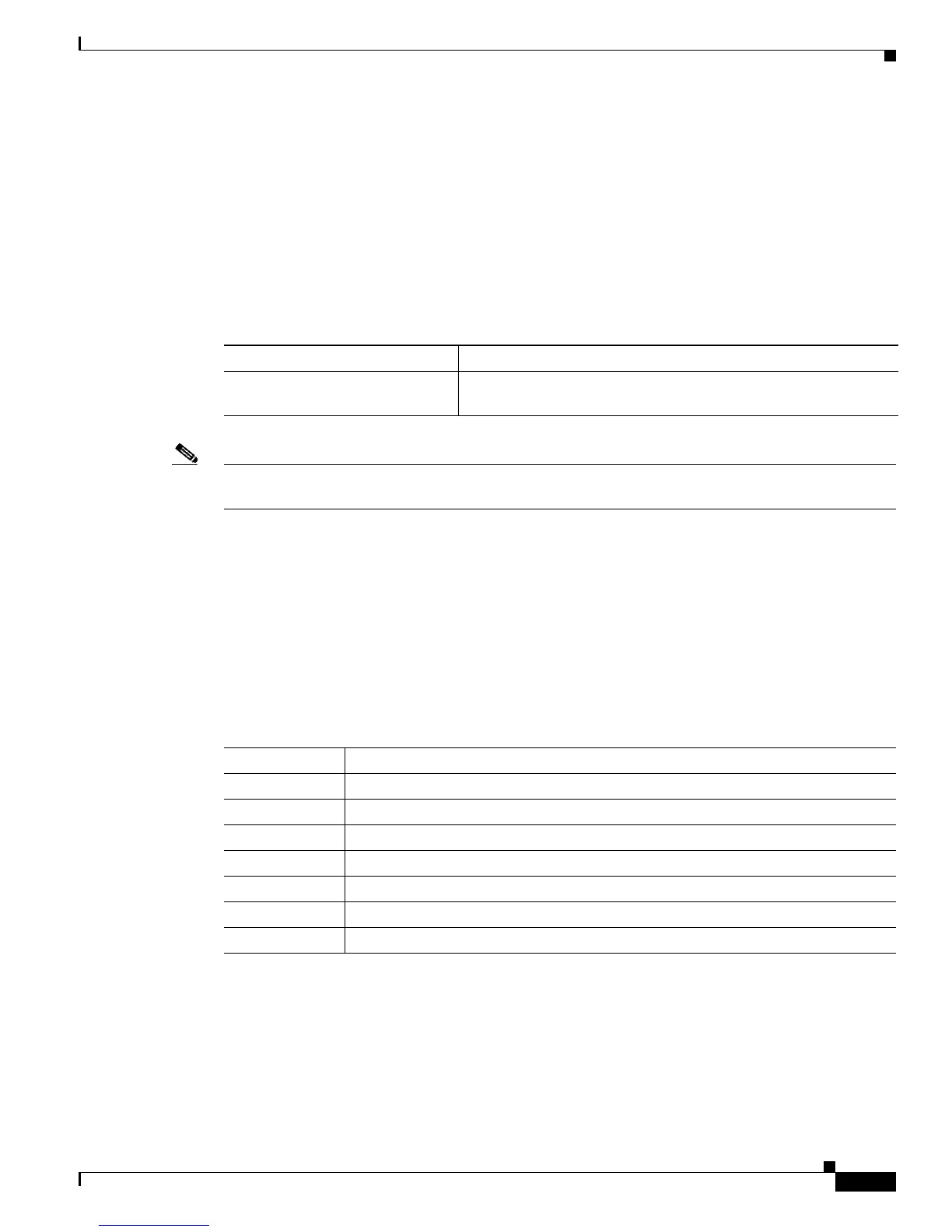39-15
Catalyst 3750 Switch Software Configuration Guide
78-16180-02
Chapter 39 Troubleshooting
Using Ping
Executing Ping
If you attempt to ping a host in a different IP subnetwork, you must define a static route to the network
or have IP routing configured to route between those subnets. For more information, see Chapter 34,
“Configuring IP Unicast Routing.”
IP routing is disabled by default on all switches. If you need to enable or configure IP routing, see
Chapter 34, “Configuring IP Unicast Routing.”
Beginning in privileged EXEC mode, use this command to ping another device on the network from the
switch:
Note Though other protocol keywords are available with the ping command, they are not supported in this
release.
This example shows how to ping an IP host:
Switch# ping 172.20.52.3
Type escape sequence to abort.
Sending 5, 100-byte ICMP Echoes to 172.20.52.3, timeout is 2 seconds:
!!!!!
Success rate is 100 percent (5/5), round-trip min/avg/max = 1/2/4 ms
Switch#
Table 39-1 describes the possible ping character output.
To end a ping session, enter the escape sequence (Ctrl-^ X by default). Simultaneously press and release
the Ctrl, Shift, and 6 keys and then press the X key.
Command Purpose
ping ip host | address Ping a remote host through IP or by supplying the host name or
network address.
Table 39-1 Ping Output Display Characters
Character Description
! Each exclamation point means receipt of a reply.
. Each period means the network server timed out while waiting for a reply.
U A destination unreachable error PDU was received.
C A congestion experienced packet was received.
I User interrupted test.
? Unknown packet type.
& Packet lifetime exceeded.

